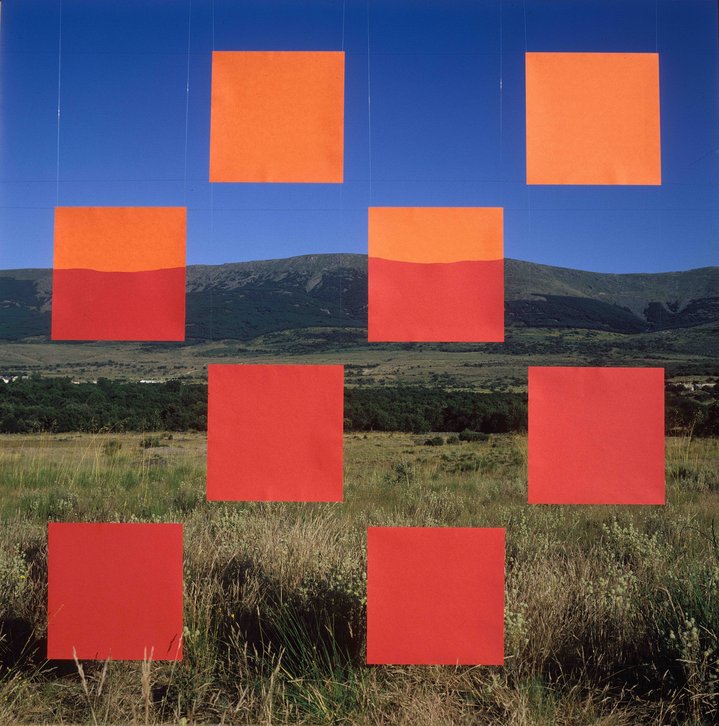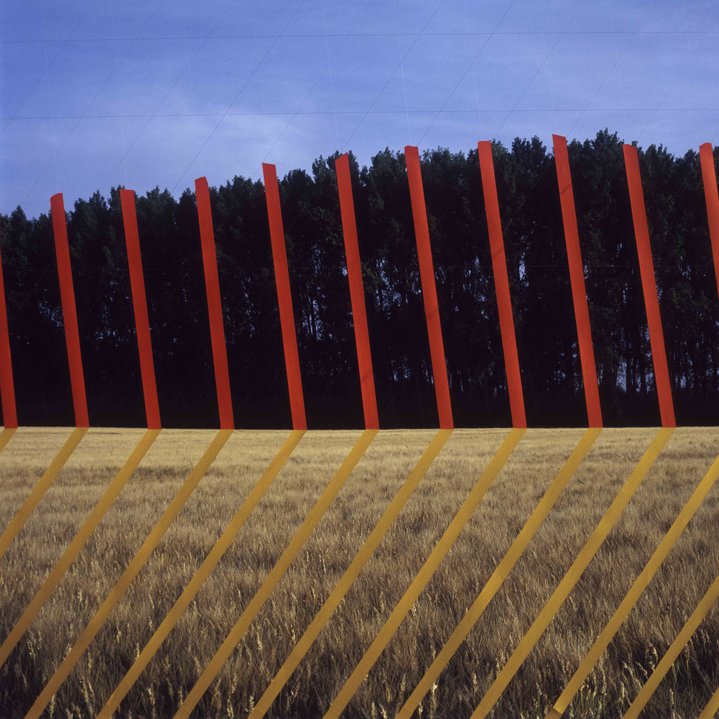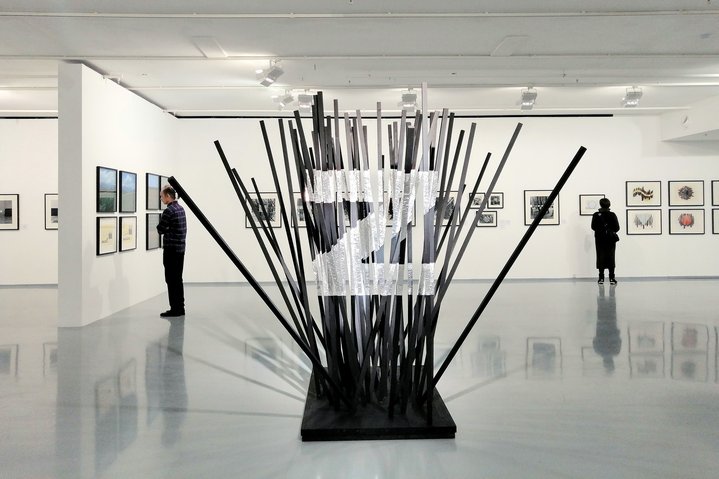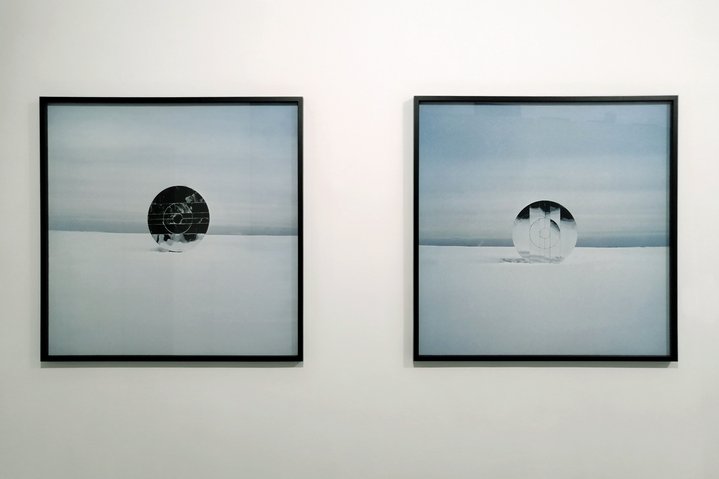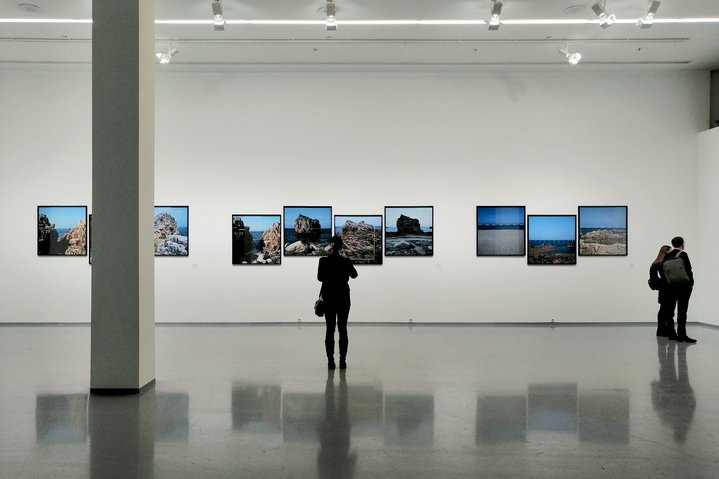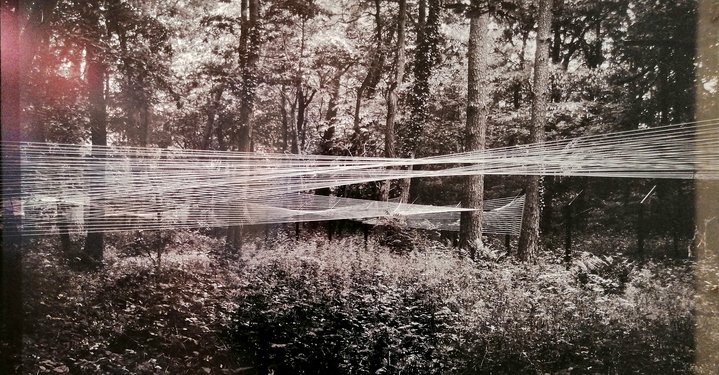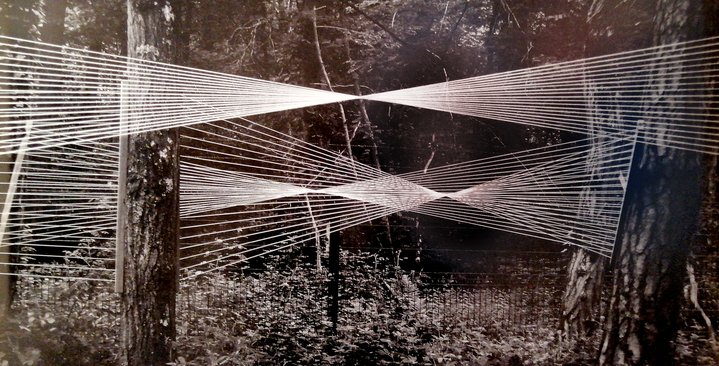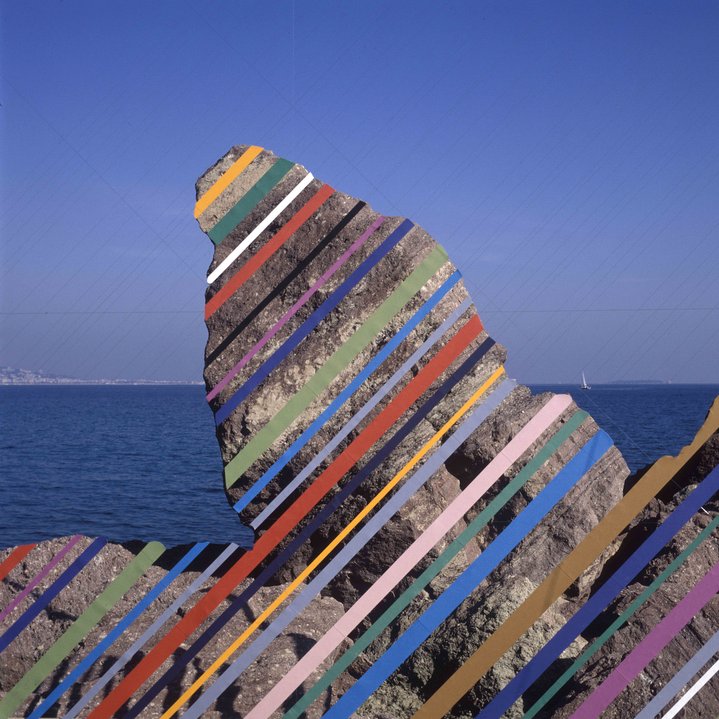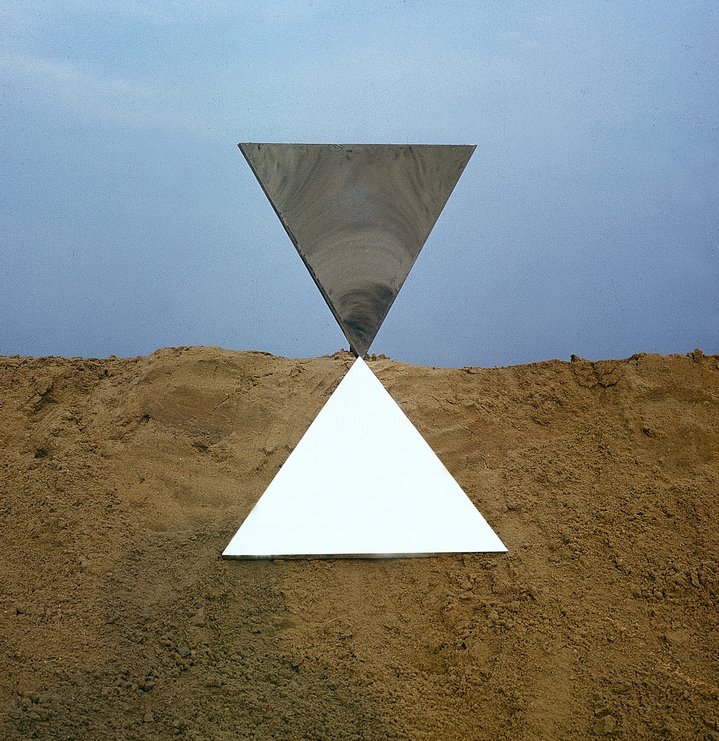Francisco Infante-Arana and Nonna Goryunova: mirror of the world

Francisco Infante and Nonna Goryunova. On the set of “Artefacts”, 1993. Courtesy of the artists
Russian artists Francisco Infante-Arana and Nonna Goryunova have been working together for almost 60 years, moving from kinetic objects to their signature blend of geometric abstraction, installation art and landscape photography.
Francisco Infante-Arana (b. 1943) and Nonna Goryunova (b. 1944) met in 1962 in their first year at Moscow’s Stroganov Academy of Arts and Industry. It was love at first sight on both sides. Their retrospective is now on view at Moscow’s Multimedia Art Museum (MAMM), as well as a smaller show ‘Around the Cyclops’ at the city’s private Krokin gallery.
For Francisco, the son of a Spaniard who fled to the USSR during the Spanish Civil War, the impulse to make art came when he was still a child. It was a force he could not explain or understand. It was very different from what he was being taught at art school. He drew geometrical forms for hours on end. It was an impulse that he could not resist, an intuitive attempt at creating on paper the visual equivalent of infinity. Those endless geometrical drawings were, as he explains, part of his very being.
Geometry as a metaphysical representation of the world is the starting point for understanding the work of these two artists who seek order, not chaos. For example, in Francisco’s ‘Plans for a Reconstruction of the Starry Sky’ (1965-1967), he rearranged the stars in the sky into simple geometrical shapes, thus creating his own constellations.
Those constellations provide a visual explanation that art is an instrument which gives clear directions.
The couple matured as artists in the early 1960s. In a way, they can be seen as children of the Khrushchev “Thaw”, which put an end to Stalin’s terror after the dictator’s death and heralded an all too brief span of freedom, which temporarily relaxed official control of the arts. That thaw emboldened artists to experiment with new forms and free themselves from the stifling restrictions of Socialist Realism.
For Francisco and Nonna kinetic art was the new art for the new times. They were also amongst the very first artists to take up performance art, although it was not called that back then. Francisco explains his 1968 ‘Spontaneous games in Nature’ as a sort of training in the open air, which they performed in order not to lose energy.
The couple’s interest in kinetic art was fuelled by the illustrated art books that Francisco and Nonna found at the house of Alexei Pevsner, a university professor and expert on non-ferrous metals and the brother of two of the forefathers of kinetic art, Antoine Pevsner and Naum Gabo, who left Russia in the 1920s. It was in Alexei’s home that Francisco and Nonna first heard about Kazimir Malevich (1879-1935). Gabo had sent his Moscow brother a postcard of a Malevich painting. Francisco was struck by its amazing use of the colour white. For him, it was clear that work, although a mere reproduction and despite Francisco’s ignorance of Suprematism at the time, was also a representation of infinity.
It fitted perfectly in the couple’s artistic creed. As Francisco puts it: “I believe geometry, metaphysics and abstractions reflect the real condition of the world we live in much better that any real object that we can see with our eyes. It is something spiritual that man cannot fully understand.”
Malevich thus played a pivotal role in the making of Francisco’s and Nonna’s first “artefact”, ‘Suprematist Games’ (1968), even though at the time, they had still not found a name for that work. However, it led to the creation of the longest-running series of works in the history of Russian contemporary art. Half a century later, the couple continues to produce them.
Simply put, these artefacts are man-made interventions in nature (usually using mirrors and different geometrical shapes of various colours) that are fixed by a photographic camera. They are at the junction of ideas and matter, games with nature on the border of metaphysics and everyday life. An artefact is far more than a photographic document. The camera here is just a recording instrument that can capture an instant. The resulting image is what counts. Artefacts are visual metaphors that viewers can interpret the way they want.
According to the artists, any narrative in the creation of the image is superfluous because narrative is also about the possibility of lying and art must not lie. Besides, Francisco points out that “the metaphor is only visual, not spiritual. We make metaphors. We do not create experiences for the senses.”
An artefact should be seen as a collaborative project with nature itself. One cannot control nature. The sun is not always out there when you need it, or the wind might be too strong for the objects arranged in the field to stay put. For example, making the series ‘Space of Time’ (2003) in Italy’s Reggio Emilia not only involved counting the way the sun moves and how shadows change, but also securing the camera’s right speed in order to capture the picture at the right moment. This unpredictability actually enriches the game with nature and, because of that, confirms the artists’ belief that “often the result is better than what we imagined before we started. In a way, our method resembles the way Fellini shot his films. He counted a lot on improvisation.”
Francisco Infante and Nonna Goryunova. Metaphor, Metaphysics, Metamorphosis
Multimedia Art Museum, Moscow (MAMM)
Moscow, Russia
27 November 2019 – 16 February 2020
Francisco Infante and Nonna Goryunova. Around the “Cyclops”
Moscow, Russia
21 November 2019 – 22 December 2019






